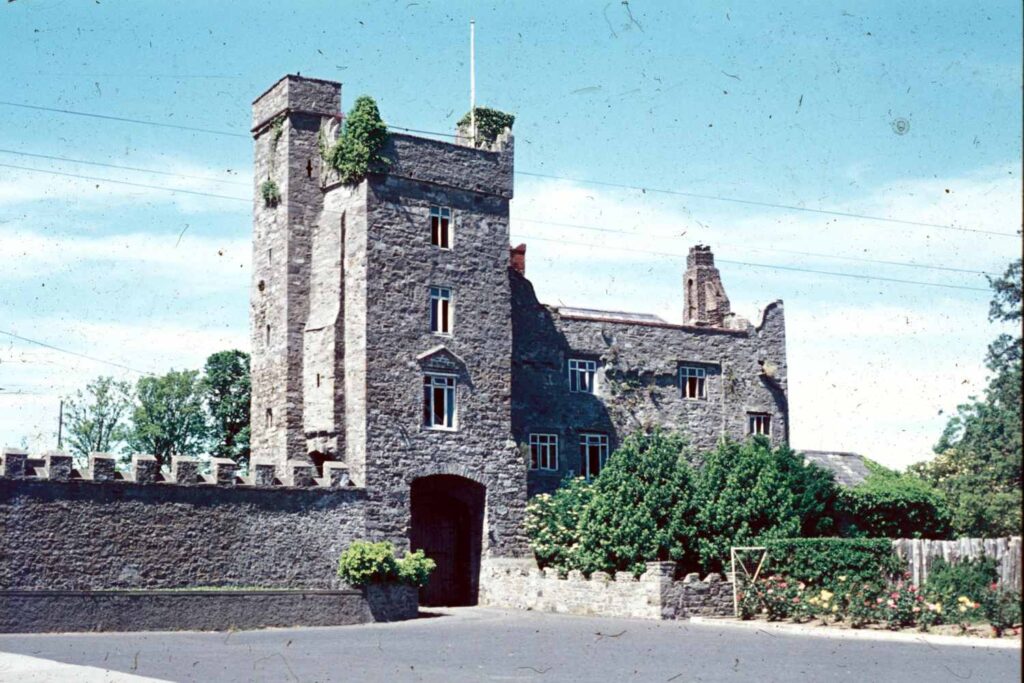I have no more words this week left to condemn and abhor the ongoing barbarity, criminality and cynical dishonesty of the Russian war unleashed on Ukraine. It seems almost wrong to write about anything else.
But there is another more banal topic which came to mind this week when I opened the latest edition of one of our finest periodicals, the beautifully produced Irish Arts Review. That topic is our built heritage and how we preserve it.
Two articles in the spring edition concern buildings in Dublin. One is the recently rebuilt ESB head office at Lower Fitzwilliam Street; the other is the early 15th-century Drimnagh Castle, an extraordinarily well-restored and beautiful part of Dublin’s built heritage. The common thread is the issue of how we value and protect the country’s architectural heritage.
Drimnagh Castle, a moated Barnewell castle built near the Bluebell and Camac rivers and occupied until the 20th century, was almost roofless and collapsing into complete ruin when in 1985 Peter Pearson, one of our great architectural historians, approached the Christian Brothers who owned the well-known school in the grounds of which it lay, with a proposal to restore the castle.
With an initial grant from Dublin Corporation, and assistance from many civic-minded volunteers and the hard work of Fás trainees under expert supervision, the castle was not merely saved but greatly restored to its present magnificent state.
The process has taken almost 40 years and is not yet complete – but the castle is saved as a living building. Only for Pearson’s intervention, it would at best have joined the vast number of roofless, crumbling landmarks that constitute so much of our built heritage. It really is a gem and deserves to be visited.
Contrast that with the fate of Tintern Abbey in Wexford. This was a Cistercian abbey dating back to the Norman period. After the Reformation, the abbey was granted to the Colclough family who lived in the converted monastery until the 1950s. As such, Tintern was a truly unique part of our architectural heritage. The building was bequeathed to the State and put into the care of the Office of Public Works (OPW).
Tragically, instead of preserving the abbey as they received it, the OPW allowed nearly all of the post-Reformation aspects of the building to become ruinous and rotten, and eventually it was conserved with very little evidence left of the period from the 1550s until the 19th century.
Perhaps that sad policy reflected 1960s Catholic Ireland’s attitude to the Reformation and the Ascendancy. But although the OPW undertook an extensive programme of archaeology which is recorded faithfully in a worthy publication, Ireland lost more of its heritage to its inventory of romantic ruins.
The article on Drimnagh Castle written by Peter Pearson considers the whole idea of restoration of historic buildings as distinct from their conservation as ruinous national monuments. I have to say that I am a fan of restoration rather than mere conservation.
We have become somewhat priggish about restoration. To my mind, buildings such as Portumna Castle and Donegal Castle are immensely the better for restoration than if left for habitation by crows. Trim Castle with its steel gantries and walkways is a bit of a drab letdown to visit. Would it be utterly wrong to reroof parts of the Rock of Cashel? Could Máire Rua’s Lemaneagh castle on the edge of the Burren be restored in the same way as Donegal Castle? Or must everything crumble?
I suppose the issue really is one of distinguishing between purist ethics of archaeology on the one hand and values of treasuring our architectural heritage. Dún Aengus, Staigue Fort and the Grianán of Aileach received their fair share of restoration – and are the better for it. The issue is not one for rigid ideological theory.
There is no right or wrong rule on restoration. Mont St Michel was restored very heavily by Édouard Corroyer in the 19th century, as was Carcassone by Eugene Viollet-le-Duc (restorer of Notre Dame in Paris). Some purists might quibble with their work but the great majority of visitors appreciate it.
In relation to the article written by James Howley about the new ESB head office, I remain of the view that they should have been required to restore the facade that they so notoriously demolished. The new building is, in some ways, an homage to the magnificent Georgian vista which the ESB wrecked.
Restoring that streetscape facade was part of Dublin’s development plan at one point. And it could have been done without being pastiche. The new building has its merits. But some of its less attractive features seem to be motivated by a self-conscious desire to avoid the label of restoration.
Yes, it could have been worse. But it could have been better.
News Digests

